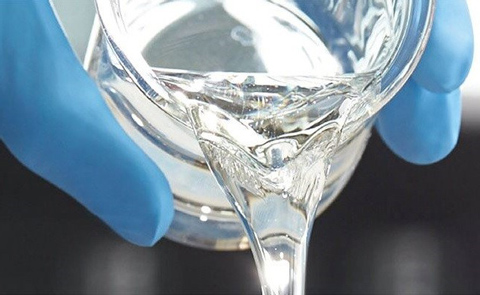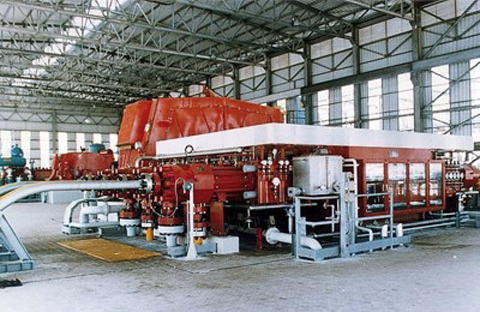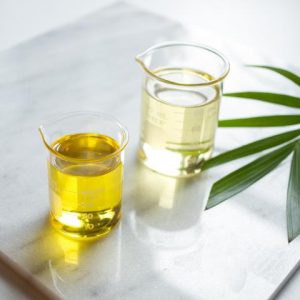
White Mineral Oil
Mineral oil is any of various colorless, odorless, light mixtures of higher alkanes from a mineral source, particularly a distillate of petroleum as distinct from usually edible vegetable oils.
Mineral oil is used as a lubricant, a cutting fluid, and a jute batching oil. Spindle oils are light mineral oils used as lubricants in textile industries. Electric space heaters sometimes use mineral oil as a heat transfer oil. Because it is no compressible, mineral oil is used as a hydraulic fluid in hydraulic machinery and vehicles.
The plastics industry also uses white mineral oils, typically in the product of polymers, thermoplastic elastomers, polyolefins, and polystyrene. This is done to control and improve the melt flow rate of finished polymer for releasing properties or changing its physical characteristics.
Mineral oil is also a common ingredient in baby lotions, cold creams, ointments, and cosmetics. It is a lightweight inexpensive oil that is odorless and tasteless. It can be used on eyelashes to prevent brittleness and breaking and, in cold cream, is also used to remove creme make-up and temporary tattoos.

Hyper Compressor Oil
Compressor Lubricants is a family of high-performance lubricants that consist of white mineral oil, viscosity improvers and lubricity packages. The oils are designed to lubricate under extreme conditions of pressure, temperature and in the presence of supercritical ethylene gas.
Used for decades in virtually every possible compressor configuration, our compressor lubricants’ high performance enables extremely long service life of packing sets. They are designed not to affect properties of the plastic end product and therefore can be used in production of all co-polymers, food and pharmaceutical grades, wire and cable, coatings and printable plastic. In the food industry, our compressor lubricants comply with the highest food grade mineral oil standards and meet the requirements of the European Directive for plastic materials intended to come into contact with foodstuffs.
Furthermore, Our Compressor Oils are synthetic blends designed for total loss lubrication of the cylinders of reciprocating hyper compressors in the manufacture of low density polyethylene (LDPE), including LDPE used in special applications such as food, pharmaceuticals and cable insulation, and ethylene vinyl acetate (EVA). Low feed rates and high quality components help ensure minimal impact on production quality of the finished polymers.
Silicone Oil
Silicone Fluid is a clear, odorless and colorless liquid , it is a linear, non-reactive polydimethylsiloxane with a viscosity of approx. 350 mm²/s. Due to its chemical structure, our Silicone Fluid has an outstanding property profile, which sets it apart from organic materials such as mineral oils.
It acts as a releasing Agent, Lubricant, Hydraulic Fluid, Antifoam Agent, Water repellent Agent, Liquid dielectric for electrical components, Heat-Transfer Oil, Polish Additive, Plastic Additive, Additive for textile and Fiber Auxiliaries.
For pharmaceutical applications, we recommend specialty silicone fluids for the cosmetic sector. Whenever particularly high heat and shear resistance is required, we recommend silicone fluids Specialty grades of the product.

Heat Transfer Oil
Heat Transfer Oil is a highly refined and stable paraffinic oil designed to be used as a heat transfer medium and quenching oil. In many industrial applications heating is provided indirectly by circulating hot oil through a heat exchanger, thus reducing hot spots and increasing the safety of the heating process.
They generally have a high boiling point and a high heat capacity. High boiling point prevents the heat transfer liquids from vaporizing at large temperatures. If the fluid has low heat capacity, then it will mean that a large amount of the fluid will be required to exchange a relatively small amount of heat. This will increase the cost of using heat transfer fluids and will reduce the efficiency of the process.
Our Heat Transfer Fluids are synthetic, organic heat-transfer medium for use in the liquid phase in closed, forced circulation heat-transfer systems & can be used over the whole working range without being kept under pressure. The boiling range of the product at atmospheric pressure is above the use limit.
